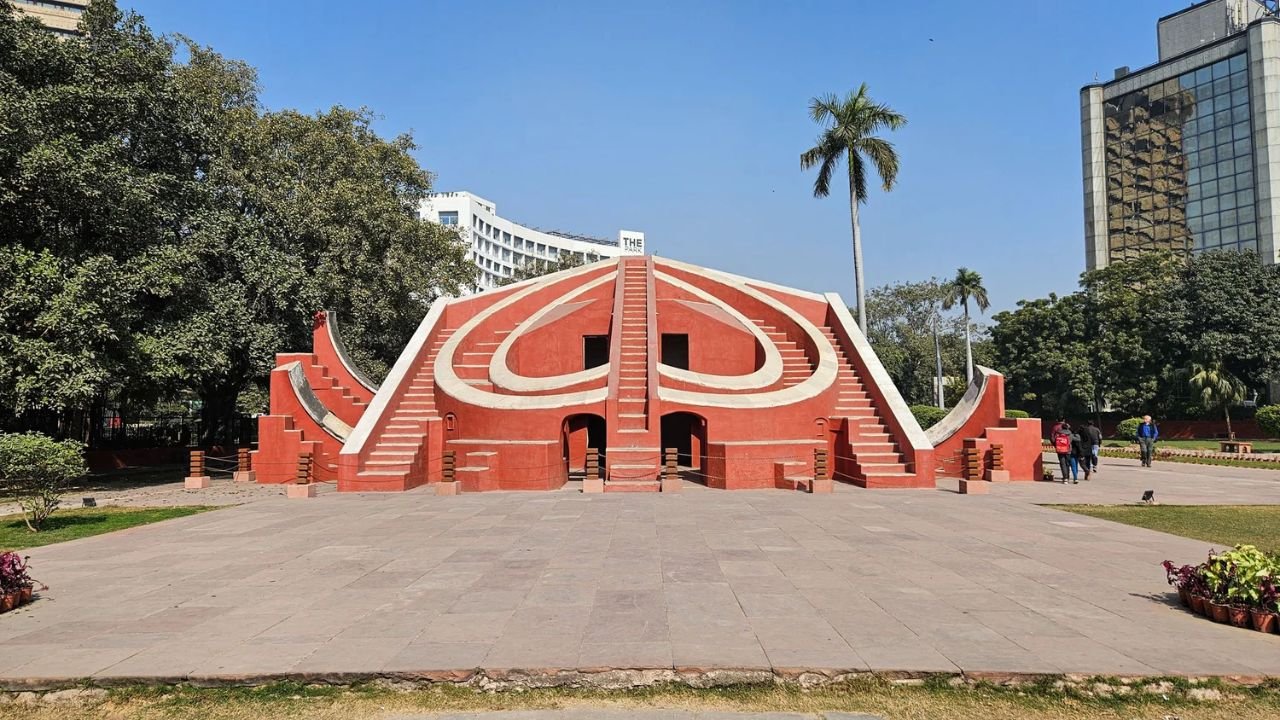If you love history and science, Jantar Mantar will amaze you. It is a centuries old observatory of Delhi situated in the center of the city. It was constructed to observe the heavens, monitor planets and to count time to a great degree of accuracy.
Today, I’ll walk you through 10 facts about jantar mantar delhi. Each fact will help you see why this place is so unique.
What is Jantar Mantar’s Legacy
Jantar Mantar was built in 1724 by Maharaja Sawai Jai Singh II. He was not just a ruler, but also a passionate astronomer. He wanted to improve the accuracy of astronomical observations. So, he constructed five observatories across India. The Delhi site was the first. It stands in Connaught Place and still inspires scientists and tourists alike.
Best Time to Visit Jantar Mantar
Delhi can be very hot in summer. The best months to visit are from November to March. The weather is pleasant and clear. You are able to walk around without feeling so hot, you can take your time, read plaques and just have a view without rushing. Morning hours are quieter and perfect for exploring.
10 Amazing Facts About Jantar Mantar Delhi
Here are 10 facts about jantar mantar delhi, explained in detail for a better understanding.
1. Built in 1724
Jantar Mantar Delhi was completed in 1724 under the orders of Maharaja Jai Singh II. It was the first of his five observatories. The other four are in Jaipur, Ujjain, Mathura, and Varanasi. This site was specially chosen for its central location in the Mughal capital, making it easy for scholars to gather data.
2. Meaning of the Name
The words “Jantar Mantar” come from Sanskrit. “Jantar” means instrument, and “Mantar” means formula or calculation. So, the name literally means “instruments for calculation.” It symbolizes the reason of the observatory which is to measure heaven and follow celestial events.
3. Home to 13 Instruments
The observatory has 13 large instruments. They are both stone and brick, and perform certain astronomical uses. They were created to monitor planets, make forecasts of eclipses and monitor time. All these instruments are still regarded as engineering wonders of the 18 th century.
4. The Giant Samrat Yantra
The Samrat Yantra is the most famous structure here. It is a massive stone sundial that rises nearly 27 meters high. It can measure time with an accuracy of up to 2 seconds. The shadow it casts moves clearly across the markings as the sun travels in the sky.
5. Remarkable Time Accuracy
Even centuries ago, Jantar Mantar’s instruments could measure time to within seconds. This was a major achievement in the early 1700s. Jantar Mantar was a source of information where astronomers relied on these readings to make calendars, orient them in courses used in navigation and in astrology.
6. The Plaque Error
One interesting quirk is that a plaque at the site mentions the year 1710 as the date of construction. However, historians confirm that the actual year was 1724. Such a minor mistake is usually impressive to visitors and evokes curiosity among them.
7. Period of Neglect
After 1857, the observatory fell into neglect. Many instruments were damaged, and maintenance stopped. It was only in the 20th century that restoration efforts brought Jantar Mantar back to its former glory.
8. The Misra Yantra
The Misra Yantra is a unique instrument combining five different tools. It can determine the shortest and longest days of the year. It may also indicate the precise time of the noon not only in Delhi but also in other cities as well, a phenomena it is an incredible achievement by that time.
9. Jai Prakash and Rama Yantra
The Jai Prakash Yantra is a bowl-shaped instrument that maps the sky overhead. The Rama Yantra determines altitude of stars and planets. The two are constructed in a mass scale, which demonstrate the vision of Jai Singh II to careful and open observance of astronomy.
10. A Blend of Science and Art
Every structure in Jantar Mantar is a mix of geometry, astronomy, and architecture. It is not just a scientific site but also a visual wonder. The curves, angles, and open spaces make it feel like a blend of mathematics and sculpture.







